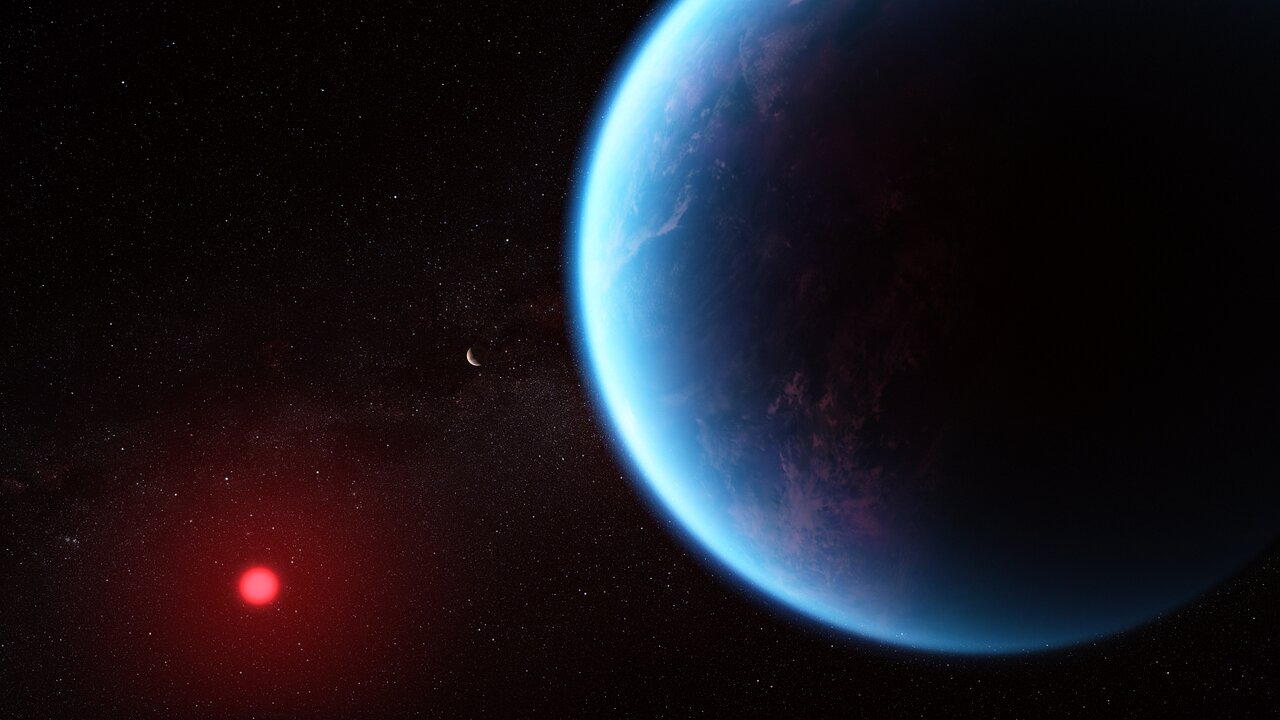The giant telescope turned its mirrors towards this exoplanet 120 light years from Earth and took advantage of its transit in front of its star to learn more about its atmosphere. Result, methane, CO2 and perhaps even dimethyl sulfide, a molecule which, on Earth, is only produced by living things.
We still know very little about this potential “hyceanic planet”.
Mini-Neptune, maxi-measures
This isn’t the first time a large space telescope has used its instruments to learn more about K2-18 b. Hubble had already tried this with some success. It must be said that this exoplanet is part of a very particular group which greatly intrigues geophysicists, that of the “mini-Neptunes”. Indeed, these less dense planets, but much larger than rocky ones like Earth, are not gaseous either. Their core is probably a conglomeration of ice and sediment.
K2-18 b, 120 light years from us, is approximately 8.6 times the mass of the Earth, although it is still 2.6 times larger, and orbits in the so-called “habitable” zone. of his star. This one is small and emits little, and this type is called a cold dwarf. All this is very promising, especially since K2-18 has an atmosphere. But researchers know very little about this type of planet, for a very simple reason: we do not have any in our Solar System or in its direct vicinity. Understanding this is therefore doubly interesting, since we lack references.
Haro on dimethyl sulfide
Thanks to its infrared sensors, and particularly its NIRISS spectrograph, the James Webb telescope is capable of studying variations in emissions from the star K2-18 when the planet K2-18 b passes in front of it during a transit. Depending on the light spectrum transmitted or blocked during the transit, researchers can determine the nature of the gases present in the atmosphere of this exoplanet.
This method was already used successfully during his first scientific year and has now been mastered. And the results are interesting, since they show an atmosphere very loaded with methane, CO2 and… in DMS, or dimethyl sulfide (C2H6S). The latter, the discovery of which must still be confirmed by additional measurements, is only produced on Earth by living organisms (and in particular, it is less glamorous, by their flatulence), in the oceans by the decomposition of phytoplankton, and on continents by our waste.
However, be careful not to see this directly as proof of the discovery of life; planetology is sometimes full of surprises. The Curiosity rover has already discovered traces of DMS on Mars, and for the moment, there is nothing to prove that it comes from a biological process linked to living things.
Under the hycean, the beach
Ideally, K2-18 b would make a good candidate for being a “hyceanic” planet, which is a type of large, hot planet with liquid oceans on its surface and a significant percentage of hydrogen in its atmosphere (note that CH4 discovered fits the definition).
Indeed, as everyone knows, the more we are able to prove that there are liquid oceans, the greater the chances of having detected a truly habitable planet, even if only by microorganisms. The step to take is still far away, but the James Webb telescope (this is one of its reasons for existence) allows us to get closer, even if K2-18 b remains 120 light years away.
Source : ESA

2